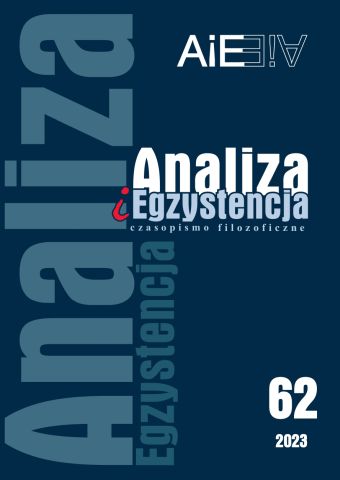
ISSN: 1734-9923
eISSN: 2300-7621
OAI
DOI: 10.18276/aie.2023.62-07





Issue archive /
62 (2023)
Androgyny and a Dream: Gaston Bachelard’s Question about a New Anthropology
| Authors: |
Kamila
Morawska

Centrum Badań Interdyscyplinarnych i Filozofii Kultury UWr |
| Keywords: | Androgyny anima animus dream psyche anthropology |
| Data publikacji całości: | 2023 |
| Page range: | 12 (135-146) |
Abstract
Androgyny as the idea of unity and wholeness appears in the thought of Gaston Bachelard in the context of a poetic dream. It is in it, as we learn from “Poetics of Dreams”, that the reconciliation of anima and animus, female and male in one psyche takes place. The anima dream is called by the French philosopher the philosophy of androgynous existence, which shows us a double idealization of humanity. The anima and animus, confirming the androgyny of the psyche, are Self-moments. This dual nature of mental being is expressed through two antagonisms represented by the function of reality (adaptation to reality and social life) and the function of irreality (loneliness of dreams); supervised thought (criticism, censorship) and free dreaming (liking, acceptance, attachment); work (effort) and rest (relaxation); anxiety (project, anticipation) and peace (presence in oneself) - especially around the duality that crystallizes in the distinction between the scientific mind (l'esprit scientifique) under the sign of the animus (concepts, knowledge) and the poetic mind (l'esprit poetique) anima (images, communion of souls). Androgyny, understood as the integral life of the psyche, is for Bachelard perspective and valuable, and he identifies attempts to seek it with the question of the meaning of human existence. The study of the dream shows its fundamental importance for the balance of the psyche. The power of images understood in this way then creates the art of living. In this sense, Bachelard becomes a precursor of a new perspective in the field of reflection on the issue of the image - it turns out that the image is responsible for the relationship between man and the world.
Download file
Article file
Bibliography
| 1. | 1. Bachelard, G. (1938). La psychanalyse du feu. |
| 2. | 2. Bachelard, G. (1948). La terre et les réveries de la volonté. |
| 3. | 3. Bachelard, G. (1950). La dialectique de la durée. |
| 4. | 4. Bachelard, G. (1957). La poétique de l’espace. |
| 5. | 5. Bachelard, G. (1960). La poétique de la rêverie. |
| 6. | 6. Bachelard, G. (1988). Fragments d’une poétique du feu. |
| 7. | 7. Buse, I. (2044). Animus et anima chez Gaston Bachelard et Mircea Eliade, [in:] Cahiers Gaston Bachelard. Bachelard et l’écriture. |
| 8. | 8. Durand, G. (1980). L’âme tigrée. |
| 9. | 9. Eliade, M. (1999). Mefistofeles i androgyn. |
| 10. | 10. Jung, C. G. (1953). Anima and animus, [in:], Two Essays in Analytical Psychology. |
| 11. | 11. Jung, C. G. (1997). Psychologia przeniesienia. |
| 12. | 12. Singer, J. (1976). Androgyny. Toward a New Theory of Sexuality. |